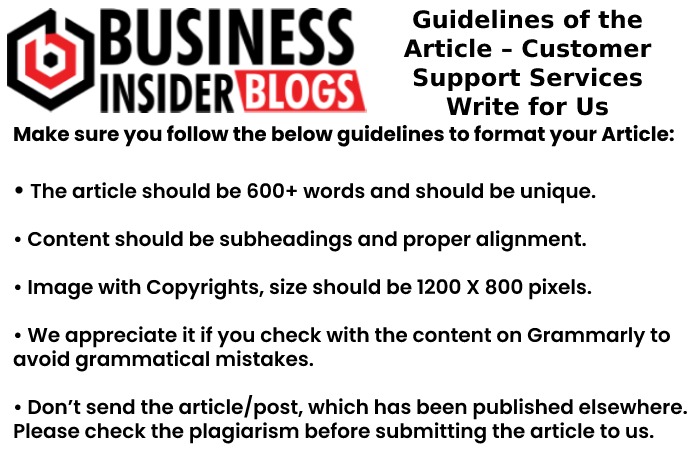Customer Support Services Through this resource, you will discover the reasons behind these behaviours. This way, you will obtain valuable data about their perception of your products or services, the attention and how well-positioned your brand is compared to the competition. Remember that consumers are willing to pay 16% more for products and services that provide a great customer experience.
What is the use of doing customer satisfaction surveys?
The opinions and comments of your clients are two of the most critical factors that validate priority decisions within your business and catalyze its sustainability and growth.
Their opinions also shape the Customer-Based Cycle or Flywheel. If you don’t know what your customers think, you are less likely to retain, delight, and entice them to make future purchases.
Here are the key takeaways from effective customer satisfaction surveys:
1. They reveal areas of opportunity
Customers are honest about the aspects that do not satisfy them. With these resources, you will obtain precise feedback with which you can give optimal attention and communicate specific recommendations to other areas, such as product design or sales.
For example, surveys are beneficial to identify if your customer service is poor, if sales staff have not given good advice or if the product they have purchased does not meet their expectations.
2. They allow you to recognize successes
Customer Support Services You will know which aspects your clients like the most to establish a guide of good practices and replicate the successes in other projects.
You can measure the customer satisfaction index (CSAT) with these resources. With this measurement, you will have an overview of the satisfaction or dissatisfaction of your customers. Through this, you will be able to generate strategies to correct what your consumers do not like and maintain the systems that have worked.
3. They enrich your buyer personas
You can add characteristics, needs and preferences in your representations of the ideal client or buyer personas. In addition, you may discover new types of consumers, which will help you create increasingly precise campaigns and customer service models.
4. They promote loyalty
When you let the customers know they are the centre of your business, they will see that you listen to them and care about improving their experience. In this way, he is more likely to become a repeat customer, either because he is satisfied from the beginning or because of a recommendation.
5. They differentiate your brand
Since not all companies take the time to receive consumer feedback or simply ignore the suggestions, you will be able to stand out from the competition.
1. Establish your objectives and the phases you will study
Create specific goals that give meaning to the entire operation with SMART objectives to obtain accurate and measurable indicators. Otherwise, you will only get disjointed data that will not be relevant to improve your organization.
Some examples of survey objectives are:
- Know the level of customer satisfaction regarding your website in the first approach: is it easy to navigate? Are the download times fast?
- Analyze the online store’s performance during the purchase: are the items easy to find? Are the descriptions detailed?
- Examine how satisfied buyers are of a specific product line in the post-sale stage: does it deliver what it promises in the description? Is it beneficial?
- Determine the critical points of loyalty by studying recurring customers: What aspects most satisfy them? Do you consider that the care service is adequate? Would they recommend the product or service to other people?
2. Direct the survey towards a target audience
The more specific and delimited your survey is, the better indicators you will obtain; That is why you must focus on a target audience.
Segment users based on this target audience:, by age group, by preferences or by their level of recurrence: if they buy continuously or do it on a single occasion.
In addition, you can study the satisfaction of those who consume a specific product, those who buy on your online site compared to the point of sale or those who downloaded your application.
3. Select the best questions For Customer Support Services
Once you have clear objectives of what you are looking for with this tool and have already defined your target audience, you can select the topics of your questions and formulate them.
You will create the most appropriate questions thanks to this focus of the study. Remember that they must be concrete, specific and with direct and precise wording so anyone can understand and answer them without a problem.
The questions can be open or closed, with options or simple “yes” or “no”. You set this depending on the data you want to collect. When they are closed, and you limit the number of options, you have greater control over the interpretation of the answers.
A survey with few questions is recommended out of respect for customers’ time and because that way you guarantee that they answer everything. If someone sees a long list of questions, likely, they will not respond.
The selection of questions must be focused on the topic, product, service or aspect you will evaluate. If they are very general or you get out of the thread leading to the available questionnaire, you may confuse the client.
4. Define your communication channels and the necessary resources
Online surveys have advantages over other media since the information will reach you directly, and the client will have all the time needed to respond.
If your business has outlets, then you can create quick exit surveys. Even so, it is always better if you have a database of your customers to send them a short survey by email.
Make an adequate budget, considering the type of survey you want to carry out. If you need polling agents, you must have more resources. In an online survey, you could opt for specialized software, the prices of which are variable.
Of course, you can use HubSpot’s free Online Form Builder to easily apply your surveys.
5. Create follow-up processes
To obtain successful results, you must establish a monitoring and verification process that the survey has been answered and that you have achieved the indicators. With it, you can measure, analyse and interpret to know what to improve or replicate.
Start by establishing satisfaction indicators. They are based on percentages and indicate that, of the total number of respondents, a particular part is satisfied with a specific aspect, be it the ease of use of your site, the usefulness of your products or the quality of the service, among other elements. Over time, you should study whether the degree of satisfaction increases or decreases.
Create a base of recommendations you can share with each responsible department, as this will improve the areas of opportunity.
6 types of questions for a customer satisfaction survey
You must ask the right questions if you want valuable customer feedback. Sharing information is not always easy, and it is not the customer’s job to offer your company constructive criticism.
If you don’t know what to ask your clientele, here are some of the types of questions we recommend including in your customer satisfaction survey:
1. Product use
When it comes to customer accomplishment and satisfaction, your business must collect feedback about your product or service. If you don’t, assessing clientele needs and providing real solutions will be more challenging.
Finding out how content your users are with your offer provides valuable information to your marketing, sales, and product teams, which can be used to improve customer retention.
2. Demographics
Demographic data is essential for marketing and sales teams because it allows customer segmentation into buyer personas. By grouping customers based on critical physiognomies, this categorization helps employees visualize the target audience. Marketing and sales teams can use that information to find leads that are more likely to convert.
Your goal is to extract honest info without it coming at the expense of the buyer’s comfort. When asking these types of queries, take a proactive and inclusive approach. These questions shouldn’t be required, so always give customers the option to skip an answer.
3. Psychographics
Psychographic questions are even more profound than demographic ones, revealing information about your customer’s preferences, habits, behaviours, and trends. It’s not about who your client is but why he does it.
Psychographic questions may seem intrusive, but they are precious pieces of information that give you insight into the reasons for your customer’s buying habits. Typically, customers provide information regarding your industry and not specifically your product.
These questions are essential in customer satisfaction surveys because you can indirectly determine how to better serve your customers.
Here are some questions you can ask:
- Do you prefer to shop from your phone or on your laptop?
- What is your priority when (insert something related to your industry)? For example, if you are a mortgage lender, you might ask, “What is your priority when buying a house?”
- What is your biggest obstacle when you (insert something related to your product)? For example, if you’ve created a recipe-sharing app, you might ask, “What’s your biggest hurdle in trying to entree the best recipes online?”
- How much time do you devote (insert social media platform you’d like to use for advertising)?
- How much do you care about sustainability when buying a product?
- What do you think about (insert type of product)? For example, if you sell women’s razors, you might ask, “What do you think about women’s razors?”
- What don’t you like about (insert type of product)?
- How many hours a day fix you spend doing (insert something that relates to your product)? For example, if you sell ergonomic car seats, you might ask, “How many hours do you drive?”
4. On the satisfaction scale
Sometimes there are aspects of your suggestion or business that you want feedback on, but your customers may not actively address them. In these suitcases, it helps to be direct and ask customers how they feel about these exact details.
Before doing so, you’ll need to determine a quantifiable way to measure responses. Adopting a satisfaction scale form is a great way to create a consistent approach to quantifying this subjective survey feedback. Some ways you can implement this scale are:
- A scale that measures from 1 to 10 (or another number). 1 means the customer was highly dissatisfied, and 10 means the client was delighted.
- A descriptive scale that events a customer’s response from dissatisfied to satisfied. The customer receives a short list of answers to choose between “very dissatisfied” and “very satisfied”.
- An image scale that uses images to symbolize customer satisfaction. For example, you can use happy, sad, then indifferent emojis to quickly collect customer feedback.
Some sample questions you can contain:
- On a gauge of 1 to 10, how pleased are you with your experience in the store today?
- How likely will you recommend (insert invention or service) to others?
- Rate your satisfaction with our team to solve your problem.
- Did you feel that our team promptly responded to your inquiry?
- Do you agree or disagree that your problem was effectively resolved?
- What are the chances that you will buy from us again?
- How likely are you to come back to our website?
5. Open questions
Open questions allow the participant to provide an answer within a text box. This encourages users to fully express their opinions, using the voice of the customer instead of the company’s previously written responses.
Although they can sometimes take a long time to analyze, these questions encourage the participant to be honest and give them the freedom to address any topic. Open-ended questions can be critical in determining your customers’ core values.
Here are open-ended questions you can ask in your following survey:
- In your own words, label how you feel about (insert company or product name here).
- How can we advance your experience with the company?
- What works for you about the product and why?
- What activities can our employees optimize?
- How can our employees best support your goals or those of your company?
- How can we improve your involvement with the website or store location?
- Why did you choose our product over the competition?
- What would be one word you would use to describe us and why?
- Do you have any comments for us?
6. Of continuity
In the last part of your survey, you want to include questions about the steps that will take place after submission. These questions allow your team to follow up with the participant in the future.
This is useful when you’re implementing changes and want updated feedback from the same customers who participated in a previous survey. You can ask these types of questions in diverse habits:
- May we contact you to trail up on these replies?
- In the future, would you be keen to retake this review?
- If we remain to update (insert product feature here), could we contact you to discuss these changes?
- Can we connect you with a customer satisfaction manager through chat?
- Would you be willing to discuss upgrade options for your product?
- Can we send you a list of helpful resources to get the most out of your product?
If the client has expressed disagreement when answering your survey and has stopped being loyal to your brand, keep in mind that all is not lost. Even when a customer is dissatisfied, some strategies can help you respond to an unhappy customer and regain their interest.
While measuring customer consummation can be tricky to manage, asking practical questions can reveal valuable customer insights, and the questions we’ve listed will certainly work.

Likewise, You can submit your articles at contact@businessinsiderblogs.com
How to Submit Your Customer Support Services Articles Customer Support Services Write For Us?
That is to say, To submit your article at www.businessinsiderblogs.com, mail us at contact@businessinsiderblogs.com.
Why Write for Business Insider Blogs– Customer Support Services Write For Us

Customer Support Services Write For Us
That is to say, here at Business Insider Blogs, we publish well-researched, informative, and unique articles. In addition, we also cover reports related to the following:
customer retention
face-to-face interaction.
customer defections
product
marketplace
customer loyalty
shareholder value
Customer Success
profitability.
microeconomics
customers/consumers
competitor
price
product
service quality
brand loyalty
brand loyalty
Guidelines of the Article – Customer Support Services Write For Us

Related Pages
Devops Write For Us
Direct Marketing Write For Us
Doge Write For Us
Drip Marketing Write For Us
Entrepreneur Write For Us
Ethereum Write For Us
Extranet Write For Us
Human Resources Write For Us
Industry Write For Us
Influencer Marketing Write For Us

